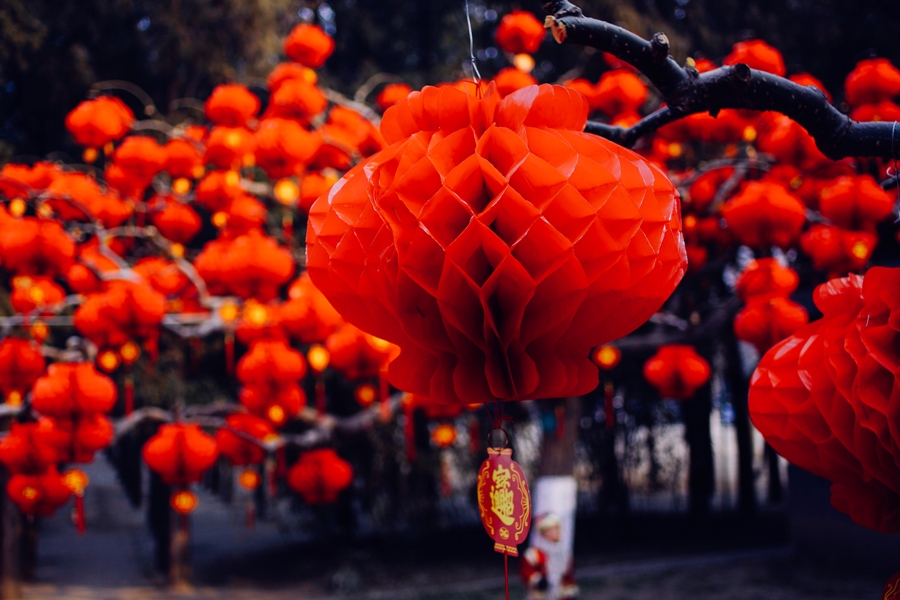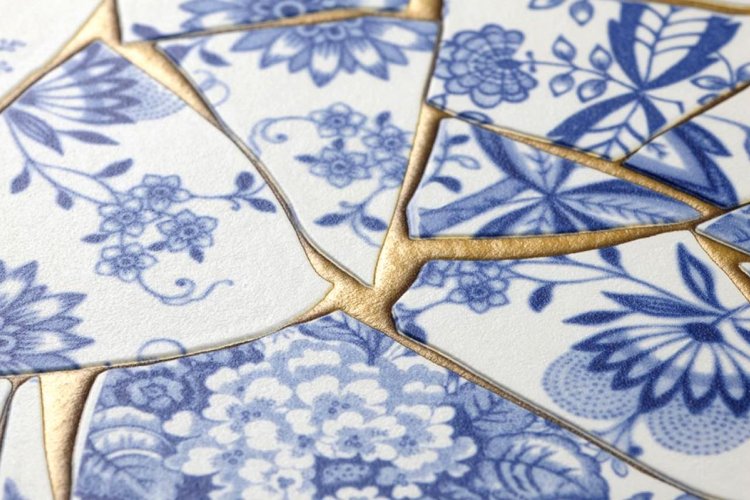Usher in the Year of the Rat With Beijing's Top 8 Temple Fairs
[Updated: Jan 23, 4pm] We have confirmed that all Beijing temple fairs will be canceled due to the ongoing coronavirus outbreak.
For Beijingers, attending a temple fair (庙会 miàohuì) comes second only to the family reunion dinner when it comes to Chinese New Year observances. Though miaohui started taking shape as early as the Wei dynasty (220-264 AD), the temple fair as we know it dates in earnest from the Tang era (618-907 AD).
Read: The History Behind Spring Festival's Most Crowded Tradition
As Buddhism and Taoism gained influence in China, temples started hosting festivals and celebrations tied to local deities and figures. Over time, these events started taking on cultural and commercial dimensions, with the development of temple markets (庙市 miào shì) and folk performances.
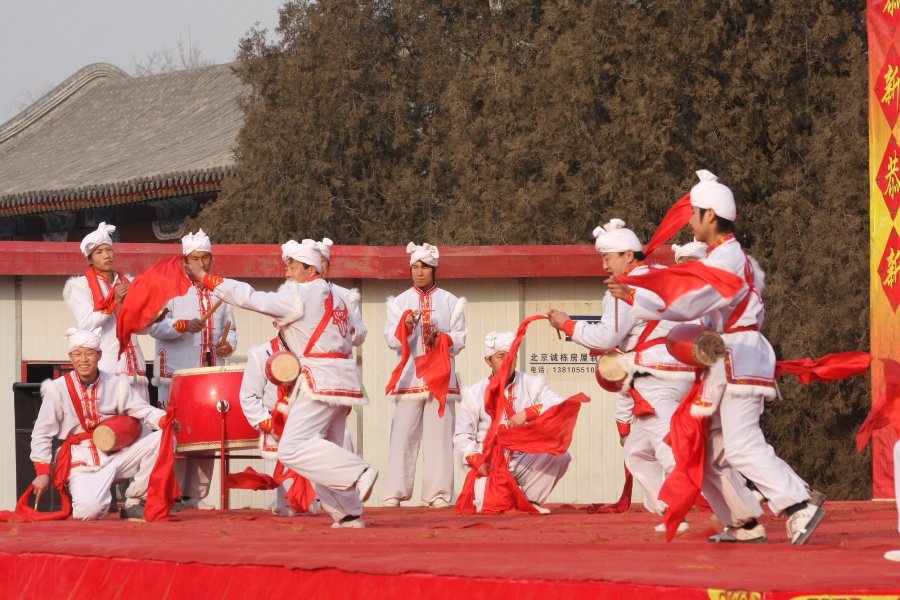
During the Yuan dynasty (1271-1368), the Quanzhen sect of Taoism spread throughout northern China and it was common for temple fairs to celebrate the achievements of Taoist figures. To this day, Taoist sites such as Beijing’s White Cloud Temple continue to hold temple fairs during Spring Festival.
Though miaohui have thrived into the present, the modern-day phenomenon is largely secular in character and rarely takes place at a temple. The commercial aspect is front and center, with a variety of vendors typically hawking snacks, toys, souvenirs, and traditional handicrafts like papercuts and clay figurines. Folk performances include lion dances, crosstalk (xiàngsheng 相声, a Chinese comedy form), kung fu demonstrations, shadow puppet shows, and yānggē (秧歌), a type of harvest dance with roots in the Song dynasty.
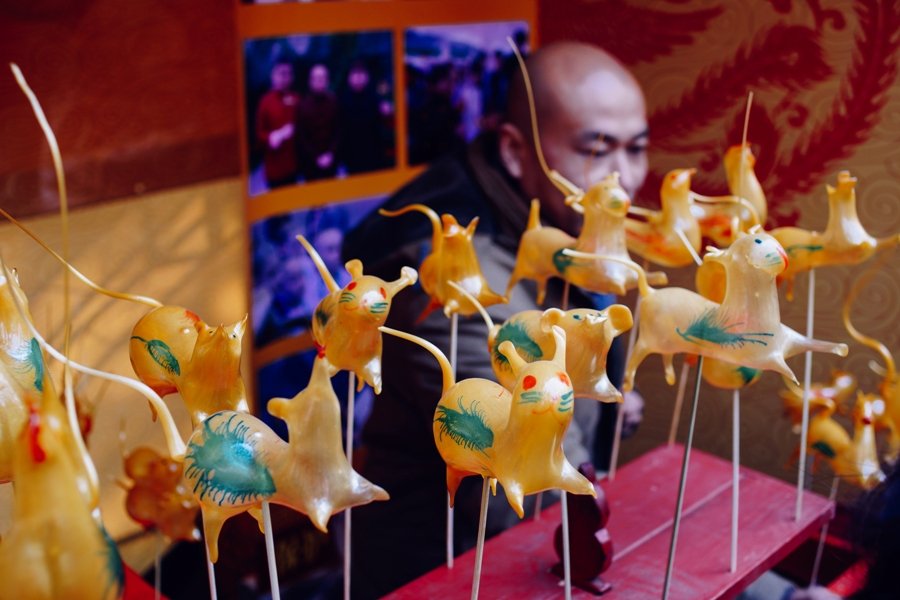
This year, the official dates for Spring Festival are Jan 24-30 and mark the beginning of the Year of the Rat. Jan 24 is the eve of Spring Festival (chúxì), when Chinese families traditionally gather for a lavish reunion dinner. Most temple fairs run from the first to the seventh day of Spring Festival (Jan 25-31).
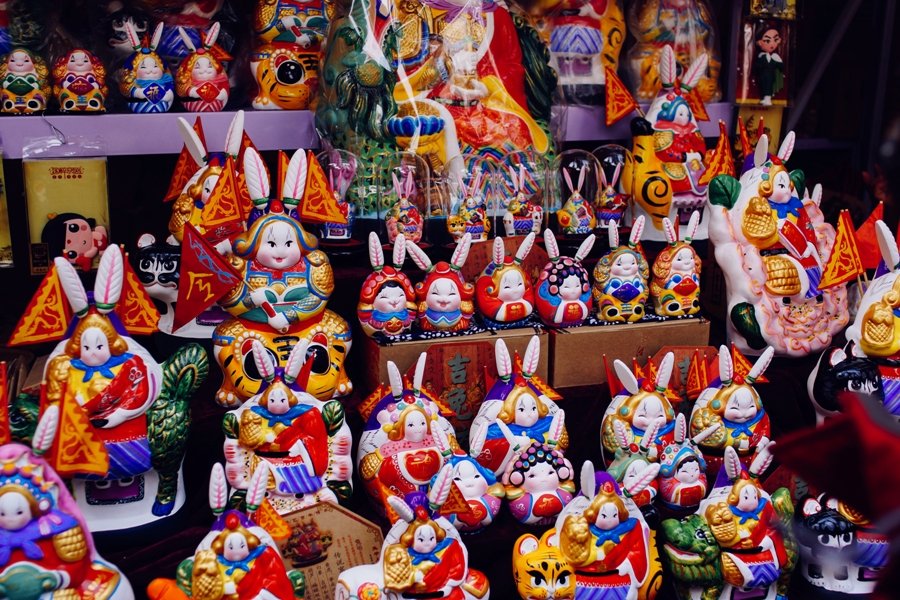
Ditan Park Temple Fair
As one of the oldest temple fairs in Beijing, Ditan Park is a safe bet for first-timers. The park contains the Temple of the Earth, where Ming and Qing dynasty emperors went to offer ritual sacrifices to the God of the Earth during the summer solstice. Reenactments of this ceremony are considered to be the highlight of the fair. A sea of red lanterns is hung all over the park for the occasion, with historical costume displays, art exhibitions, around 130 vendors selling handicrafts, and xiǎochī (snacks) from Beijing, Sichuan, Tianjin, and Xinjiang. There will be over 100 various folk performances this year.
RMB 10. Jan 25-29, 8.30am-4.30pm. Ditan Park, A2, Andingmenwai Dajie, Dongcheng District (6421 4657)
地坛公园庙会:东城区安定门外大街2号地坛公园
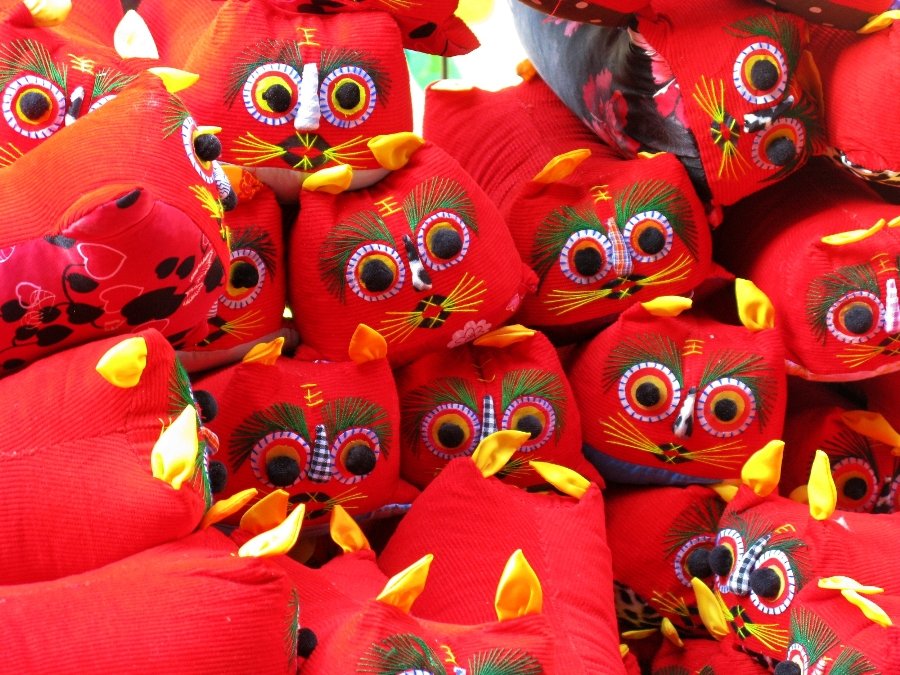
Longtan Park Temple Fair
Longtan Park Temple Fair is slightly larger than the rendition in Ditan Park though perhaps not as popular, yet offering 300,000 tickets. Attendees will be treated an "ice carnival" with ice sculptures, ice-skating, ice-cycling, and ice-surfing area as well as snacks from a multitude of vendors.
RMB 10. Jan 25-29, times TBD. Longtan Park, 8 Longtan Lu, Dongcheng District (6714 4336)
龙潭公园庙会:东城区龙潭路8号龙潭公园

Changdian Temple Fair
The Changdian Temple Fair has been around since the reign of the Jiajing Emperor (1521-1567) in the Ming dynasty. Historically, the fair took place in an area that contained three temples near Liulichang in Beijing’s former Xuanwu District. In 2011, the temple fair was moved to Taoranting Park, where it now hosts xiangsheng performances, Beijing opera, dragon dances, acrobatic shows, food vendors, and traditional handicraft stalls.
RMB 2. Jan 25-29, 8.30am-4.30pm. Taoranting Park, 19 Taiping Jie, Xicheng District (6315 9837)
厂甸庙会:西城区太平街19号陶然亭公园

Yuanmingyuan Royal Temple Fair
Once known as the "Versailles of the East,” Yuanmingyuan (the Old Summer Palace) hosted Spring Festival celebrations for the imperial family during the Qing dynasty. Despite the site’s checkered history (it was pillaged and burned down by French and British forces during the Second Opium War), an annual temple fair was established in the grounds in 2010. Expect ice skating performances, cultural exhibitions, historical costume displays, and a “royal market” with imperial-style snacks, calligraphy, paintings, crafts, and lantern riddles.
RMB 10. Jan 25-30, 9am-5pm. Yuanmingyuan, 28 Qinghua Xilu, Haidian District (6261 7801)
圆明园皇家庙会:海淀区清华西路28号圆明园
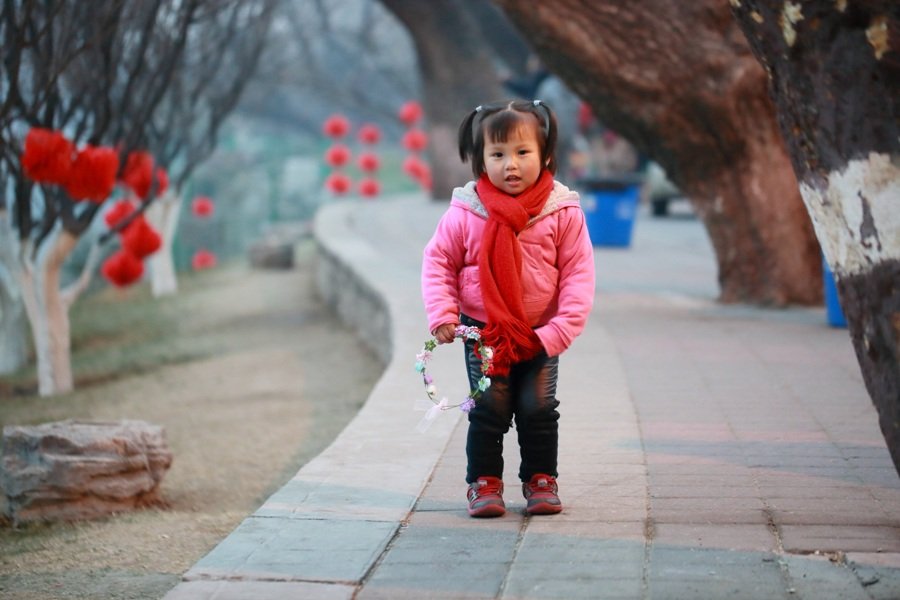
Daguanyuan Temple Fair
Daguanyuan is based on an aristocratic garden described in the masterpiece Dream of the Red Chamber by Qing dynasty author Cao Xueqin (1715-1763). The garden was built in 1983 to serve as a backdrop for the CCTV television series of the same name; it was opened to the public in 1989. At Daguanyuan’s temple fair, visitors can get a sense of the grandness of the Red Mansions and the luxurious lifestyle of an upper-class Chinese family. Refined dishes from the novel will be available to try and actors will re-enact some of the novel’s classic passages. However, you do not have to be a Chinese literature buff to enjoy the event.
RMB 40. Jan 25-29, 8.30am-5pm. Daguanyuan Temple, 12 Nancaiyuan Xijie, Xicheng District (6354 4993)
大观园庙会:西城区南菜园西街12号大观园
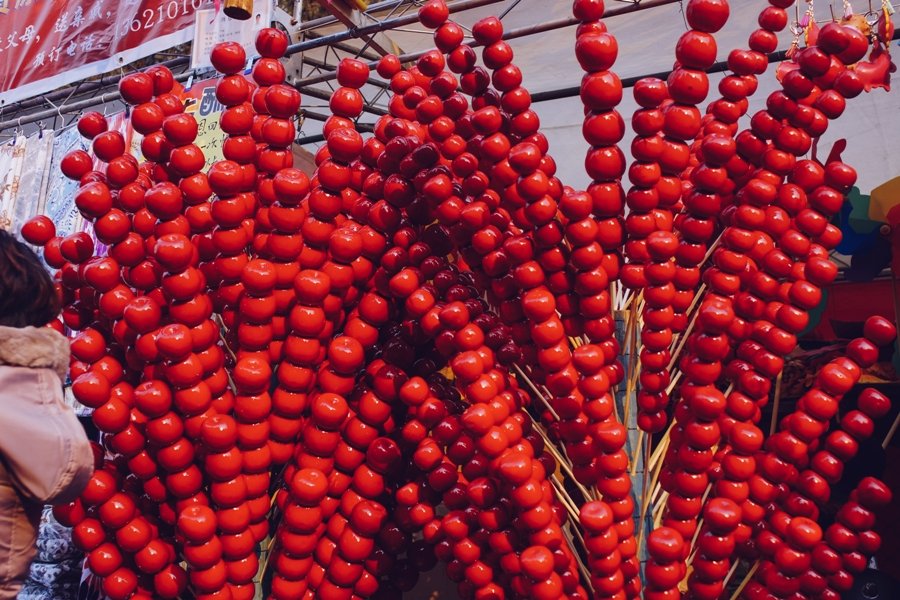
Dongyue Temple Fair
Founded during the Yuan dynasty, Dongyue is a small Taoist temple dedicated to the god of Mount Tai, one of China’s five sacred Taoist mountains. Despite its modest size, the Dongyue temple fair is popular with locals. Entertainment includes kung fu displays, shadow puppet shows, Taoist music performances, and art exhibitions. Local calligraphers demonstrate their skills in couplets (春联 chūnlián), a type of Chinese New Year decoration featuring a pair of couplets written on vertical strips of paper. Chunlian are usually given away for free and designed to be hung around the front door.
RMB 10. Jan 25-29, times TBD. 141 Chaoyangmen Waidajie, Chaoyang District (6551 0151)
东岳庙庙会:朝阳区朝阳门外大街141号
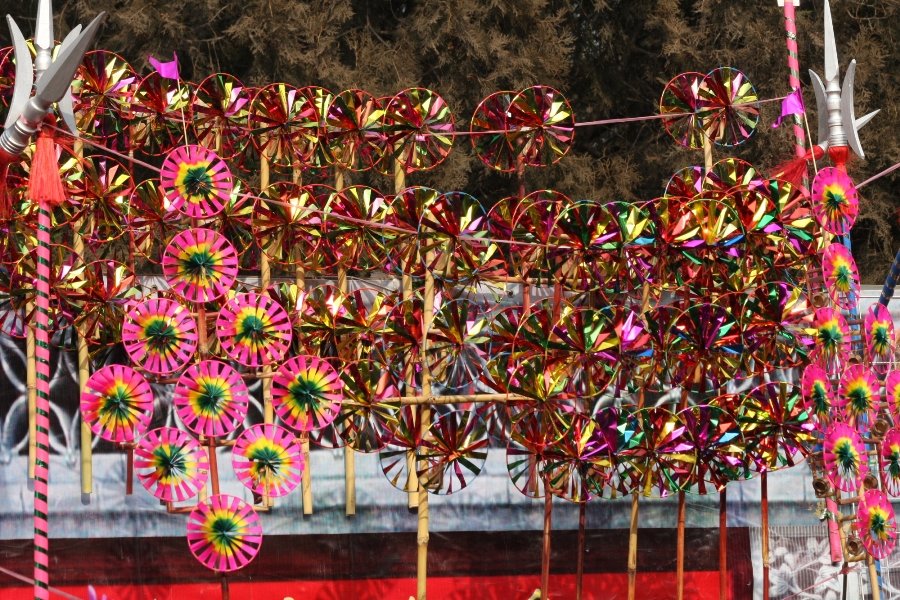
White Cloud Temple Temple Fair
The seat of the Taoist Association of China, White Cloud Temple hosts one of the few Spring Festival fairs that still retain a religious character. Every year, the devout visit the temple to burn incense sticks. In addition, there is a curious tradition associated with the large coin that hangs from White Cloud’s Wofeng Bridge; it is said that fortune will come to those who manage to hit the small brass bell hanging from the hole in the coin with a regular coin.
RMB 10. Jan 25-Feb 1, various times. 6 Baiyunguan Jie, Xicheng District (6344 3666)
白云观庙会:西城区白云观街6号
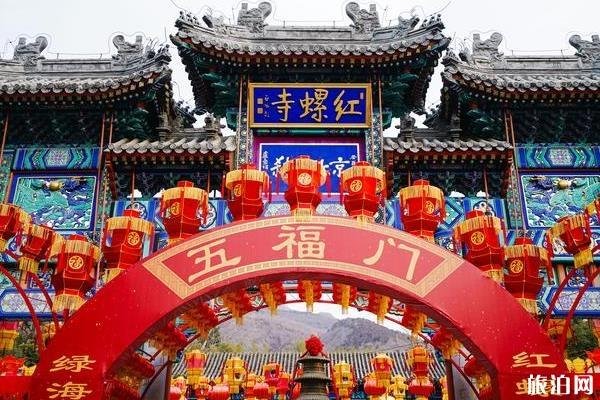
Red Conch Tempel Temple Fair
As one of the most sacrosanct locales under the Buddhist sky and the largest Buddhist center of the north, emperors used to prostrate themselves at Red Conch Temple, or Hongluo Si. The temple's name originates from a legend about a pair of red glowing snails that are said to be incarnations of the two princesses of the Jade Emperor who protect the site from within their mountain spring. It'll be the 25th Temple Fair they organize this year, there will be folk performances, riddles, people could also visit the temples to burn incense sticks, and make your own lanterns.
RMB 54. Jan 25-Feb 9, 8.30am-5.30pm. Hongluo Mountain, Yanxi Town, Huairou District (6068 1175)
红螺寺庙会:怀柔区雁栖镇红螺山红螺寺

